Medical expert of the article
New publications
Preparations
Nasal sprays for runny nose
Last reviewed: 03.07.2025

All iLive content is medically reviewed or fact checked to ensure as much factual accuracy as possible.
We have strict sourcing guidelines and only link to reputable media sites, academic research institutions and, whenever possible, medically peer reviewed studies. Note that the numbers in parentheses ([1], [2], etc.) are clickable links to these studies.
If you feel that any of our content is inaccurate, out-of-date, or otherwise questionable, please select it and press Ctrl + Enter.
A runny nose is a very common ailment that both children and adults often suffer from. Nasal discharge can accompany some colds and viral diseases, allergies, and can also occur as a reaction to external irritants - smoke, dust, etc. In order to help get rid of a runny nose, any pharmacist can offer a lot of different medications: drops, ointments, sprays and even tablets. However, most patients reasonably believe that a nasal spray for a runny nose is the most convenient dosage form to use.
Firstly, the nasal spray is applied in measured doses – that is, you can accurately calculate the dosage without fear of excessive application of the drug to the mucous membrane. Secondly, the spray form allows the active substance to penetrate into all hard-to-reach areas of the nasal cavity, which cannot be achieved with drops and, especially, ointment. And, thirdly, making several spray injections is much more convenient than tilting your head back to apply drops.
However, it is necessary to take into account that nasal sprays have different mechanisms of action, therefore they are intended for the treatment of different types of the disease. After all, as we have already noted above, a runny nose can be caused by different reasons. Such a reason is usually determined by a doctor, and based on the data obtained, he prescribes or recommends a specific medication.
Indications nasal spray
Nasal sprays can be prescribed not only at the first symptoms of a cold, although the main use of such medications is to relieve difficulty breathing during inflammatory processes in the nasal cavity. Of course, the inability to breathe normally gradually leads to loss of appetite, loss of smell, headaches. In addition, the patient is bothered by discomfort in the nose, sneezing, mucopurulent discharge.
In addition to a cold, a runny nose can be a consequence of allergies, acute respiratory viral infections, or exposure to dust or smoke. In any case, difficulty breathing and nasal discharge are a protective action of the body in response to any external or internal irritants. The body is fighting a disease or pathological situation, and the task of a nasal spray is to help it with this.
Release form
- Humer nasal spray with sea water is one of the few medications that can be used by both children and pregnant women. The composition of the drug is represented by sea water, which effectively cleanses the mucous membrane and accelerates the removal of secretions and bacteria from the nasal cavity. The drug is used on average 2-3 times a day.
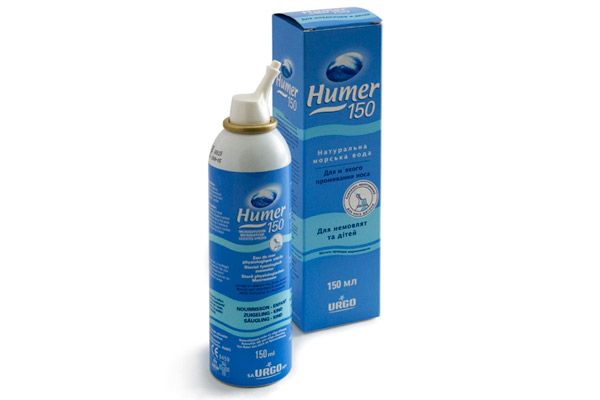
- Zvezdochka for a runny nose is a drug called Zvezdochka Noz Spray, based on xylometazoline. The spray has a vasoconstrictor effect and has practically nothing in common with the well-known balm "Golden Star". Zvezdochka Noz Spray is used a maximum of three times a day, for no longer than 3 days.
- Tizin is a vasoconstrictor spray with xylometazoline. The recommended use of Tizin is up to 3 times a day, 1 spray. Treatment with this product should not be continued for more than 3-4 days.
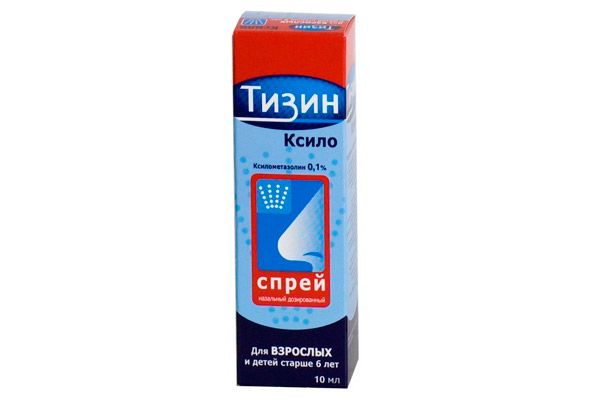
- Xymelin is a vasoconstrictor spray with xylometazoline. To avoid the effect of addiction, the spray is used no more than 2-3 times a day for 4 days.
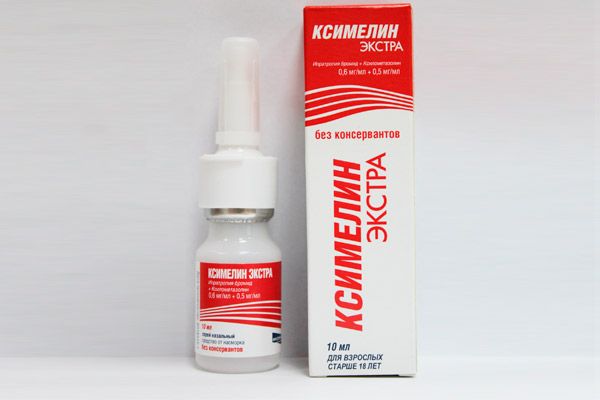
- Avamys is a hormonal nasal spray intended for the treatment of allergic rhinitis. It can be used from the age of 2, 1-2 sprays once a day.
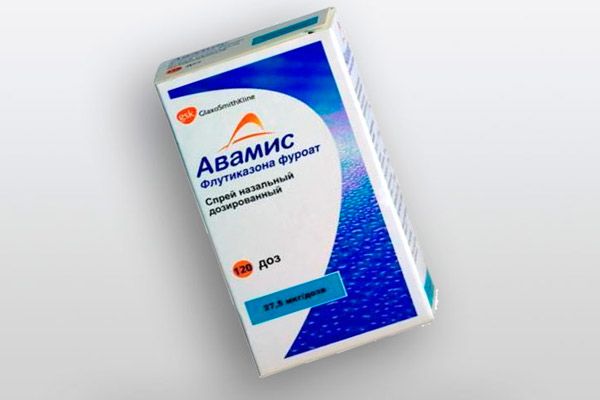
- Snoop is a nasal spray with xylometazoline. It is a vasoconstrictor medication, so it is used up to 3 times a day and no more than 3-4 days in a row.
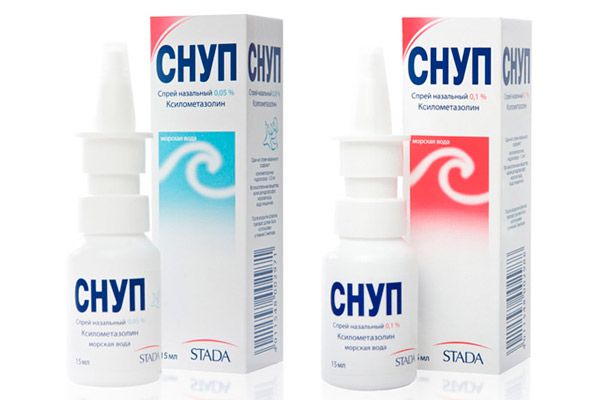
- Otrivin is an aerosol remedy for a runny nose with xylometazoline. It is prescribed up to 3-4 times a day, no longer than a week. Drug dependence may develop.
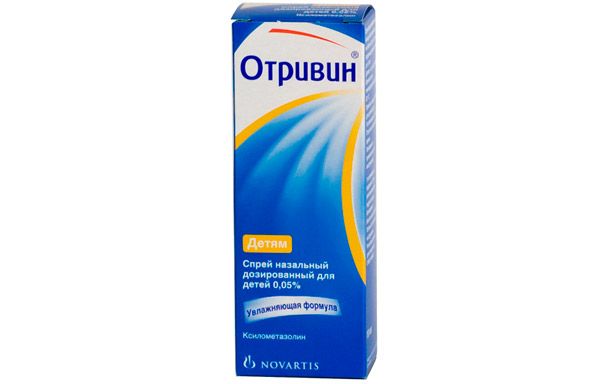
- Rinofluimucil is a combination drug, a nasal spray. It is a combination of a mucolytic and a vasoconstrictor, which generally ensures the liquefaction of viscous secretions with a decrease in swelling and redness of the mucous membrane. The spray can be injected three times a day, for no more than a week.
- Nazivin is a nasal spray with a vasoconstrictor effect. The active ingredient is oxymetazoline. The drug is not suitable for long-term use. The scheme of use is up to 3 times a day, up to 3-4 days in a row.
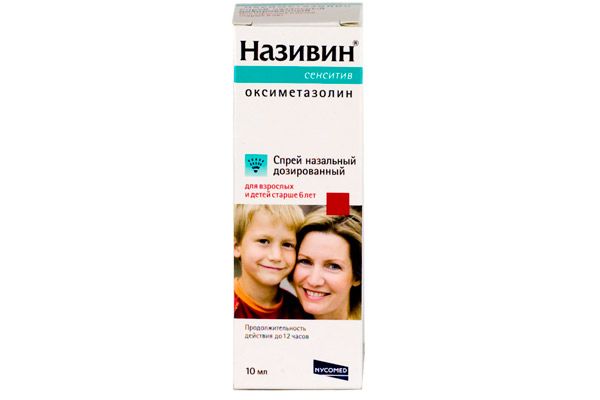
- Nasal spray Vicks (Vicks Active Sinex Spray) is a vasoconstrictor with oxymetazoline. The effect of the drug lasts up to 8-10 hours. The spray for a runny nose is used 2-3 times a day, up to 5 days.
- Chinese spray for a runny nose Bee Gun - a nasal spray with propolis. It is a combination of an antiseptic and biostimulating substances of plant origin. It is used up to 3 times a day, long-term use of the product is possible. Caution: the spray can cause an allergic reaction.
- Quix Eucalyptus - a spray for a runny nose with eucalyptus and sea water. Facilitates nasal breathing by creating osmotic pressure in the nasal cavity. Apply 2-3 times a day. The duration of treatment is determined by the doctor.
- Pinosol is a spray with a composition of plant origin. It has an antimicrobial and anti-inflammatory effect. The ingredients of the spray are oil extracts of mint leaves, pine and eucalyptus. Additionally, thymol and tocopherol are present. Pinosol is allowed to be used up to 6 times a day, the duration of the treatment course is 10 days.

- Fervex Spray is a spray remedy for a runny nose with oxymetazoline. Usually 2 sprays are administered every 11 hours. Duration of therapy is 3 days.
- Dlanos is a spray with a vasoconstrictor effect, represented by the active component xylometazoline. The nasal spray is injected once every 8-10 hours.
- Nasonex is a hormonal nasal spray for allergic rhinitis. The active ingredient is mometasone (corticosteroid). The product is used for prevention or treatment, 1-2 sprays once a day. The duration of treatment is individual.
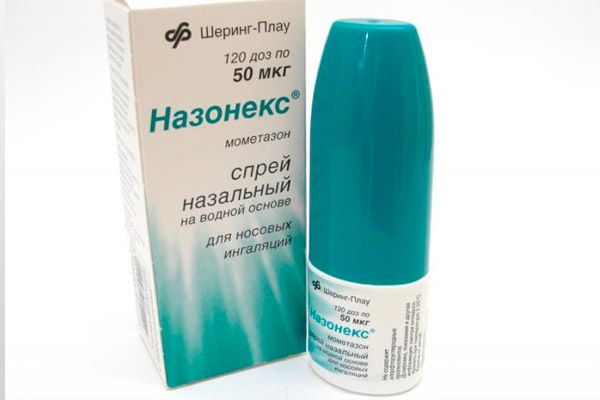
- Kameton is a combined antimicrobial and anti-inflammatory drug, the composition of which is represented by camphor, levomenthol, chlorobutanol and eucalyptus oil extract. The spray can be used up to 4 times a day.
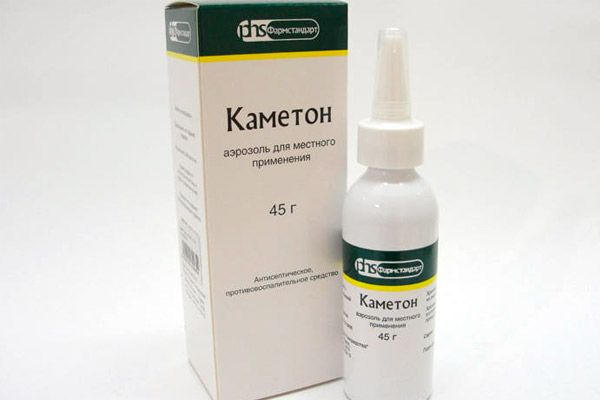
- Isofra is a nasal spray with an antibiotic based on framycetin. It can be used to treat rhinitis and inflammation of the paranasal sinuses. The course of Isofra therapy lasts 1 week. Frequency of use is 1 spray 3-4 times a day.
- Afrin is a nasal spray with oxymetazoline, a vasoconstrictor. Reduces the manifestations of edema and hypersecretion of the mucous membrane. It is recommended to inject the product once every 11 hours.
- Rinostop is a spray that exhibits vasoconstrictive activity due to xylometazoline. It is recommended to carry out 2 sprays daily for no more than 5 days.
- Rinonorm is a spray with the adrenomimetic xylometazoline. It facilitates nasal breathing and eliminates excess secretion. It is used 2-3 times a day, for no more than a week.
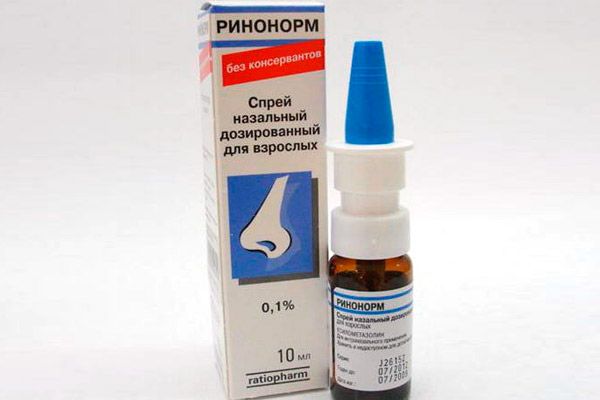
- Vibrocil is a vasoconstrictor nasal spray for a runny nose with phenylephrine and dimethindene maleate. It is used for symptomatic therapy three times a day, maximum – for a week.
- Polydexa is a combined action spray that is a combination of an antibiotic (neomycin), a glucocorticosteroid hormone (dexamethasone) and a vasoconstrictor (phenylephrine). Due to its complex effect, the spray can be used to treat acute and chronic forms of rhinitis and sinusitis. The product is injected into the nasal passages on average 4 times a day for a week.
- Rint nasal - spray for a runny nose with menthol and vasoconstrictor component oxymetazoline. It is prescribed for use no more than 3 times a day, no more than 5-7 days in a row.
- Aqua Maris Strong is a nasal spray without xylometazoline, based on sea water. Reduces mucosal swelling, removes excess secretion, and reduces the concentration of bacteria in the nasal cavity. The spray is approved for use by children and pregnant patients. Dosage: 3-4 sprays per day for 2 weeks.
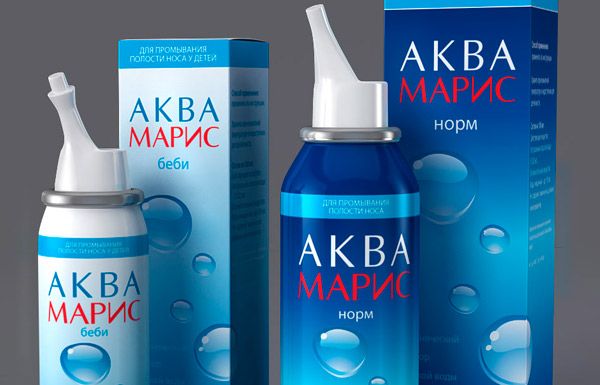
- Allertek and Nazarel are hormonal nasal sprays based on dexamethasone. They are prescribed for the treatment of allergic rhinitis. The effect is observed already 3-5 hours after the first injection and lasts for 24 hours. Sprays are used once a day (in the morning), until the painful symptoms are completely relieved.
- Nazol is a nasal spray that constricts blood vessels due to the presence of oxymetazoline. It is used for symptomatic relief of a runny nose. The drug should not be used more than 2 times a day, for more than 3 days in a row.
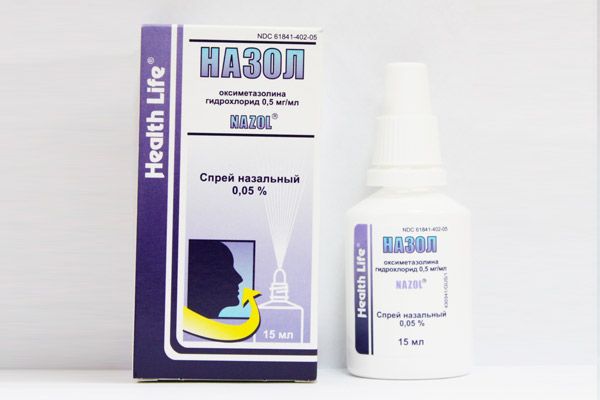
- Bioparox is a nasal spray with the antibiotic fusafungine. It is prescribed for a runny nose, 4 times a day. According to the latest data, it has been banned for use in some countries due to an increased risk of allergies and anaphylactic shock.
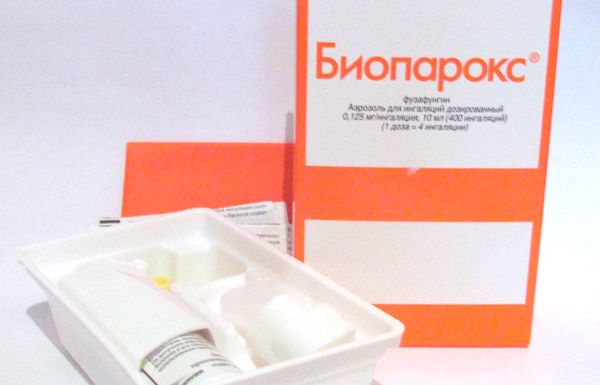
- The Kingdom of Aromas is a Crimean nasal balm for a runny nose based on natural oil extracts. The product creates a protective film on the mucous membrane, restores the surface tissue, strengthens local immunity and normalizes respiratory function. The product is used up to 4 times a day, both for bacterial and viral runny nose.
- Euphorbium is a homeopathic nasal spray with herbal ingredients. The product perfectly moisturizes the nasal mucosa, eliminating inflammatory changes without drying out the tissues. With proper use of the drug, the runny nose goes away in 3-4 days.
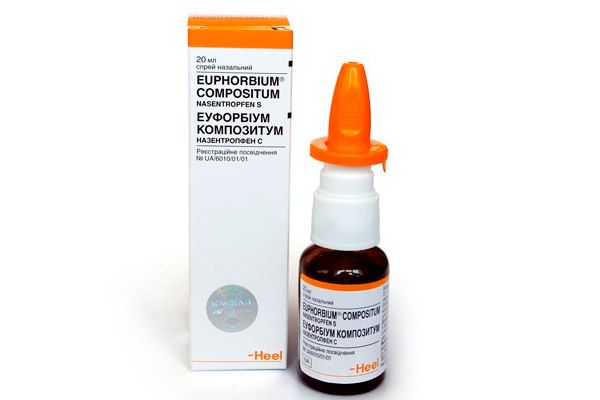
The spray can be prescribed during pregnancy and breastfeeding. The dosage regimen is 1 spray up to 5 times a day.
Pharmacodynamics
If you try to systematize the list of known nasal sprays for a runny nose according to their pharmacodynamics, you can make the following diagram:
- Sprays with alpha-adrenergic agonists are vasoconstrictors that reduce the secretion of the nasal mucosa and facilitate breathing.
- Antiseptic sprays are drugs that fight infection, both bacterial and viral.
- Antibiotic sprays are drugs that are prescribed against a specific bacterial pathogen.
- Sprays with glucocorticoids are hormonal agents that can be used for almost any type of runny nose, including allergic ones.
- Sprays with immunostimulating properties - contain substances that help to increase local immunity during the inflammatory process in the nasal cavity.
- Herbal sprays are complex preparations, usually with a minimum number of side effects.
- Antihistamine nasal sprays – used for allergic rhinitis and sinusitis.
- Homeopathic sprays are preparations with a specially dosed composition and a minimum of side effects and contraindications.
Knowing the pharmacological properties of a particular drug allows the doctor to choose the correct and effective spray for a particular type of runny nose.
Pharmacokinetics
As a rule, the use of the spray is practically not accompanied by absorption of the active substances of the drug into the blood. If some absorption does occur, its indicators are considered clinically insignificant, since they cannot affect any processes in the body.
The spray is evenly distributed on the mucous membrane of the nasal cavity and is removed from the nose with the secreted mucus.
There is no accumulation of the drug in tissues.
Dosing and administration
The use of the spray should be accompanied by the following actions on the part of the patient:
- Before administering the injection, you must blow your nose to clear your nasal passages for better application of the medicine;
- holding one nostril opening with a finger, inject the drug into the free nasal passage, while taking a sharp but shallow breath; repeat the same with the second nostril opening;
- Immediately after the injection, it is not advisable to sneeze or repeatedly clear the nasal passages so that the drug remains on the mucous membrane as long as possible.
The dosage of the spray – the number of injections and their frequency – depends on the specific drug and is described in detail in the annotation to the drug.
Use nasal spray during pregnancy
Nasal spray is an undesirable drug during pregnancy. Despite the fact that its systemic absorption is minimal, such drugs are highly undesirable, since their effect has not been sufficiently studied. This is especially true in the first half of pregnancy, when the risk of damage to the fetus is especially high. In extreme cases, the doctor may allow short-term use of children's vasoconstrictor drugs. However, such a prescription is rather an exception to the rule, so you should never make an independent decision about using this or that remedy for a runny nose.
It is also not advisable to use a nasal spray during lactation, because the minimal amount of the drug that does get into the blood also penetrates into breast milk. In the future, this may have a toxic or other undesirable effect on the still immature child's body.
Contraindications
Nasal sprays for a runny nose are not prescribed to patients who have an allergic sensitivity to the ingredients of the drug.
Contraindications also include cardiovascular diseases:
- heart failure;
- hypertension;
- IHD;
- heart rhythm disturbances.
Sprays are not used to treat rhinitis in patients with diabetes mellitus or thyroid disease.
It should be noted separately that nasal sprays are not used to treat infants. The fact is that the reaction of a small organism to the action of the spray may be bronchospasm, so this form of the drug can only be used in children over 1 year old.
Side effects nasal spray
Local use of nasal sprays may cause an allergic reaction to the ingredients of the medication.
Addiction to nasal sprays can develop when using vasoconstrictor drugs for a long time, so it is not recommended to use alpha-adrenergic agonist sprays for more than 3 days in a row. Such addiction is also called "habituation" and is a difficulty in nasal breathing without another dose of the drug, even when the runny nose as such has already been cured. To get rid of addiction, you should immediately stop using the vasoconstrictor spray and regularly rinse the nasal cavity with sea water or saline (isotonic sodium chloride solution) until the nasal mucosa is completely restored.
Interactions with other drugs
You should not use several nasal sprays at the same time, or combine treatment with a vasoconstrictor spray and vasoconstrictor drops.
When using antibiotic nasal sprays, it is not advisable to drink alcohol during treatment.
The simultaneous use of antibiotics in the form of a spray and in the form of tablets or injections must be approved by the attending physician.
 [ 21 ]
[ 21 ]
Storage conditions
Nasal sprays for a runny nose should be kept out of the reach of children, at a temperature range from +15 to +25°C.
 [ 22 ]
[ 22 ]
Shelf life
The shelf life of sprays may vary, usually from 2 to 3 years.
Effective spray for runny nose
Is it possible to identify one most effective nasal spray against a runny nose? The fact is that not all patients expect the same effect from sprays:
- If you need a quick effect to restore nasal breathing, then nasal sprays with adrenomimetics, which have a rapid vasoconstrictor effect, can help. Many of these drugs act almost instantly after injection. The only, but noticeable disadvantage: vasoconstrictor sprays cannot be used often or for a long time, since the effect of "addiction" may develop. Adrenomimetics include all products containing xylometazoline, oxymetazoline or phenylephrine.
- If you need to get rid of allergic rhinitis, then antihistamine sprays based on hormones - corticosteroids, or containing cromoglycic acid will come to the rescue. The action of hormonal agents is faster, since the effect is detected already during the first day after using the spray. Cromoglycate drugs (Cromogexal, Cromoglin, Stadaglicin) act slowly, gradually accumulating in the body. Their effect is manifested only after 1-2 weeks.
- If the purpose of using nasal sprays is not only and not so much to ease nasal breathing, but to treat bacterial rhinitis or even sinusitis, then antibiotic-based sprays will be the priority drugs. Such drugs are prescribed only by a doctor, taking into account the sensitivity of bacteria to antimicrobial substances.
- If you are looking for a safe and at the same time effective nasal spray, the effect of which is not immediate, but stable, then the drugs of choice here will be products based on sea water. They are also called simply saline solutions. Such sprays do not have a negative effect on the mucous membrane, are not addictive, and are not contraindicated for children and pregnant patients. Within two or three days of using such products, the discharge will become more liquid, breathing will become easier, while there will be no dryness or irritation of the mucous tissues. If saline solutions are used immediately at the first signs of ARVI or flu, then it is possible to prevent further spread of viruses to the lower parts of the respiratory system.
- For those who prefer organic products, homeopathic sprays based on natural plant ingredients are the most suitable. Both children and adults can be treated with such products. Despite the fact that many people are skeptical about homeopathy, there is quite good data on the effectiveness of such drugs for a runny nose.
 [ 23 ]
[ 23 ]
Cheap nasal spray
And, in conclusion of the article, we offer you a short list of the most inexpensive nasal sprays. As practice shows, many patients tend to buy these cheap drugs. Does the quality depend on the price of the spray? Not always. Often the consumer pays extra money for the "brand", "advertisement", or simply for beautiful and bright packaging.
- Rinolor spray, with aloe or eucalyptus. Average cost – 35-40 UAH.
- Nazol spray with oxymetazoline, average cost – from 35 to 39 UAH.
- Nazalong spray. Price – from 30 to 35 UAH.
- Noxprey or Noxprey-baby. Price – from 30 to 40 UAH.
- Rinoflu spray – from 22 to 25 UAH.
- Pharmazoline spray 0.1% – cost about 25 UAH.
Which nasal spray to choose for a runny nose is up to you. But remember that a doctor's consultation is mandatory.
Attention!
To simplify the perception of information, this instruction for use of the drug "Nasal sprays for runny nose" translated and presented in a special form on the basis of the official instructions for medical use of the drug. Before use read the annotation that came directly to medicines.
Description provided for informational purposes and is not a guide to self-healing. The need for this drug, the purpose of the treatment regimen, methods and dose of the drug is determined solely by the attending physician. Self-medication is dangerous for your health.

